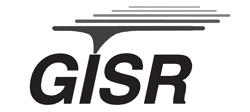
Gulf Integrated Spill Response Consortium
The vision of the Gulf Integrated Spill Response Consortium (GISR) is to understand and predict the fundamental behavior of petroleum fluids in the ocean environment. This capability is critical to inform decisions during response to oil spills and for development of mitigation plans, ultimately yielding significant environmental and financial savings. The Mission of this proposal is to develop a multi-scale modeling system validated by field and laboratory experiments to track the pathways of transforming hydrocarbons released from deep oil spills in the Gulf of Mexico. Our approach will be to conduct a multi-scale suite of field and laboratory experiments that target critical deficiencies in our understanding of the physical, chemical, and biological behavior of petroleum fluids as they transit the Gulf from a deep oil spill to the beach, marsh, estuary, or atmosphere, and to synthesize this understanding through the application of a validated, multi-scale numerical model of petroleum fate and transport in the Gulf.
The unprecedented scale of the Deepwater Horizon oil spill highlighted a critical need to understand the important processes affecting fate and transport of petroleum fluids over the wide range of scales, from the wellhead to the beach, in the Gulf of Mexico and to assess the benefits of potential spill response activities. This consortium proposal focuses on evaluating the mechanisms controlling fate and transport of oil in the Gulf of Mexico through laboratory, field, and numerical experiments.
